�i���Ա� About Exhibition
���|�a�I Time | Venue
2014�~5��13��- 6��13�� 8am - 11pm | ���W�C�~�s����Y�i�����x
13 May to 13 Jun, 2014 8am - 11pm | Exhibition Podium, Youth Square, Chai Wan.2014�~2��10��- 2��16�� 10am -10pm |�y�F�C�����Ƥ��ߦa�U�j��E3��E4�i��
10 am-10pm, Feb 10-16, 2014 | Ground floor, Exhibition area E3 and E4, Hong Kong Cultural Centre, Tsim Sha Tsui2014�~2��28��- 3��30�� �{�P�����B���B�� 12pm-6pm | �`��
���{��269��1��
12pm - 6pm, Feb 28 - Mar 30, 2014 Every Friday, Saturday, Sunday | 1st floor, 269 Yu Chau Street, Sham Shui Po�d�� Enquiry: 2713 9165 (���Ũ� Irene Chan, �d�êF Ng Wai Tung
�����Ш|���� Activities of Public Education�`��
�i�������A�u���J�T�v�ٱN�|��@�t�C�����Ш|���ʡC�p������ѥ[�A�гz�L�q�� 2713 9165�ιq�lsocohkg@gmail.com���W�A���¡I
Public education activities will be held during the exhibition in SSP. If you are interested, please book in advance by calling 2713 9165 or sending email to socohkg@gmail.com. Thanks!
����ɽ� Group Visits & Tour
���u���A�`�J�����S�J�{�p�A�A�X20-35�H����A�C���ɽ��1�p��
In-depth introduction of homelessness by social workers; suitable for groups of 20-35 persons; each tour lasts one hour���O�G�D�ȧQ����GHK $1,000/��; �ӷ~���c�GHK $2,000/��
Charges: Non-profit organizations: HK$ 1,000/group; Business institutions: HK$ 2,000/group���W�ɽЧi���A�X�A���ɶ� Please inform time you prefer during registration
���y���� Talks & Sharing
���u�P�S�J�B�ͻP�A�����S�J�I�᪺�ͩR�G�ƩM�F�����D�A�C�����y��1�p��
Sharing of homeless stories and relevant policy issues; each sharing lasts one hour���O�GHK$50/�H Charges: HK$ 50/�H
���W�ɽп�ܾA�X�A���ɶ� Please select time you prefer during registration
�� 1/3/2014, 4pm-5pm �� 8/3/2014, 4pm-5pm
�� 15/3/2014, 4pm-5pm �� 22/3/2014, 4pm-5pm�������m�ƥ����y�� Homeless FC�n��M Public Screening of Homeless FC
�ɺtJames Leong, Lynn Lee���ɤ@�~���@�s�S�J�B�Ͱѥ[�L�a�̥@�ɪM���G��
Homeless FC follows a group of homeless people, who tried hard to participate in the Homeless World Cup���U����G HK$ 40/�H Donation HK$ 40/person
�ɶ� Time�G29/3/2014, 4pm-6pm
�U�������Ш|���ʪ��� Download Activities of Public Education
|
�Ǩ� ��B�O�^�a ? ������ɥ��A�~�|�`�� ��~�ӡA���䪺�S�J�B�ͫ����w��C�B�ƪ������t�a�ئ��@�ӡu�S�J�̤��͵��F���v�A�N�S�J�a�I�馨�u���I�v�A�H���S�J�{�H�|�q�������C�̰_��O�b�����Ȥ����[�˧��B�����ذ_�W�Y���������Y�A�ΦU�����ʿ�k��ê�S�J�C���~��k�ܥ��[�F�G�h�ӬF�������H�j����֤��K������ʤE�s���δ���Ѿ����A�S�b�M������M���A�N�S�J�̪��a���q�q�ߤW�U�����C ��1999�~�_�A������ϲ�´��|��⥻����v�O�̩M��r�O�̡A��������S�J�̵��Y�ͦs��p�C�o���ڭ̲ĤT���|���S�J����v�i�u���J�T�v�åX���P�W��v���A�P�������ɸ�V15�~�������A�ӭz�S�J�̭���F���X���ɪ��L�`�M�i���A����H�Ͱf�Үɪ��L�U�M�����C�ڭ̼�������ۡA�o�ج����ন�����ܪ��}�ݡA��_�F���A�]��_���|���ߤH���S�J�̪����`�C ������ϲ�´��|�D�� �G�s�@�|�~�G��
|
|
|
|
|
| �����S�J�̬ۤ� Photos of the Homeless in HK | ||
|
�ʾ� �L���Q�h�~�ӡA�o�¦a����Ѿ����@���O�L�a�i�k�̪��ɱJ���a�C��~�Ӿ����S�J�̤��A�n�ȸǪB�ͺ����W�h�A�o�Ӱ����������Q�L�̺٬�'Downtown'�C 2013�~4��10�馭�W�A�@�s�n�ȸ��S�J�̤@ı���ӡA���M�oı�L�̺�ı����O�W�K�F�@�i�a�F�p�N�B�B���i�ܡA�կȶ¦r�q���L�̡G2013�~5��7�餧��A��������N�n�Q�� �A�~��r�d�x�a�Y�ݹH�k�C �ƹ�W�A����2011�~�ɡA�o�y����ij�|�������p��ij���N���X��ij�A�ʳ�����Ѿ����A��ij�|�̫�Mij�ʥ�253�U�A�������Ѿ�����ưϤu�{�A�b�Ѿ����[�س�����\��200�ӥ����۫˪�L�A�ت��O�G(1) �����S�J�̻E����(2) ����/��Ƥu�{ ���ޤ@�s�S�J�̵o�_��ʡA��ij�Q�X���A�ߪk�|ij���]�@�A���d�A���o�y����ij�|'�B�A����'�A2013�~8��A�����Q�ʤF�C Closure of a bridge Over the past 10 years or so, the area under the bridge at Yau Ma Tei's Ferry Street had been a shelter for the homeless, among which many were of Southeast Asian origin. They called the desolate site "Downtown." On the morning of April 10th, a handful of South Asian homeless people woke up to find a notice from the Lands Department posted to the wooden planks they used as beds. The notice stated that after May 7th, the area would be closed down for refurbishment, and loitering or residing there would be considered illegal. In fact, as early as 2011, two district councilors from DAB had in fact proposed to clean up the area. The council eventually decided to spend HK$2.53 million for a greening project, which involved fencing off the area and placing 200 concrete flower planters under the bridge. The goals were: (1) To prevent homeless
people from gathering in the area, and Despite the protests
of homeless people and lawmakers, the district council was adamant
about the greening project. In August 2013, the area was closed
down. (����)�����[�ؤF�W�Y�������Z�Z�۩M�p�s�C�A�S�J�̭n�έӦnı�]���e���C (Left photo)With pebbles and artificial mounds installed under the bridge, street sleepers can hardly have a good night sleep. |
|
|
|
�@�s�S�J�̨M�w��ʰ_�ӡA�½�Downtown�C The homeless decided to defend their Downtown. |
 |
|
|
�G�D���t �W�J�o���G�D��H���h�A���b�䤤�R�oť��ۤv���}�B�n�A���۱q���ߩM���Ӧ��i�o�̡A�N�B�B���a�}�N�@�U�l���x�_�ӡC�o��~�����Q�}���͡A���u�٦b�ƤQ�̤��~�L�̫K�_������ܷN�A�s�L�̪��Q��Dounaut �]�����o�Q�N��Ө��l�߰_�ө�ۧA�C �������G�D�ءA�@��������K�A�o�ؤ��Ȧ��N���}�}�A�٦����H���N�z�����A���F���׳o�ǡA���ߩM���ӥu�n��ӵw�ȥ֡A�f�ؤ@���{�ɤp�ΡC�p��ަ�Dounaut �]�O�Ӱ��D�C���@���Ψ�`�]�ADounaut�����F�A��H�|�B�j�M�A�̫�~�oıDounaut �w�Q�e�����ߪL�����A�۵M�@�z�p�A���F��^���A��H�B��F�n�X�Ӥp�ɡC �u�R���O����H���N�O���ޥL�Ǿ����h���A���J���h�֡A�����ӧO���٬O�S�J���Y�A�A���·R�L�C�v���ߩM���Ӫ��G�Ʃγ\�N�O�̦n������...... |
|
|
|
Underground Love Before the arrival of Ah Lap and Ah Man, the subway in Wanchai was so quiet you could hear a pin drop. Yet the cold underground tunnel now radiates joy as the couple and their pet dog Dounaut welcome social workers to their make-shift shelter. Yet living underground is by no means easy. One not only has to brace for bitter winds but also the stone-cold gazes from pedestrians. Using cardboard wastes as raw materials, Ah Lap and Ah Man still manage to build a temporary love nest that allows them to have some privacy. Taking care of Dounaut is another issue. The dog once ran away during the night and both thought they had lost it forever. It was later found that Dounaut had been sent to the government animal shelter in Pokfulam, where the couple spent hours to reach on foot and to bring it home. "What is love? It is the conviction to stand by someone regardless of him/her being rich or poor." Years later, I find the saying true and alive in the story of Ah Lap and Ah Man...... |
||
|
�ڦn�w�b�A�S�n�w�V �٦b�g������u�ɤ��ɡA���_�M�w����B�;P��v���]�ƪ��~�ȡC�o�O�@���ܤj���~�ȡA���Ұ��G���٬O�M�w���x�@�աC�_��~�ȵo�i�}�n�C���L��Ӥ@���j���q�l�v���s�ꩱ�b�j�F�}�~��A���_���ͷN�K�}�l���쥴���C���F�u�~�A���_�@�a��~�ҦA���A�S��M�Ҧ��n�W�A�������ন�\�C�̲סA�L�̨M�w���~�C �u�ڬƦܭ����ݯ�H����L�ͷN�C���A���L�{�C�v���_���C��Ӫ��_���F�̤j�����~�w�w�L���۶Ⱦl�����U���x�W�A�����D���A�M�������F�C�u�ڱ�i�H�ν��Ĺ�f�v�L���A�u���Y���M�����\�C�v���_�^��ᤣ�ୱ��a�x�K�K��_���h�ۤv���a�x�A�~�L�w�Ҫ��}���]�⤣�W����...... |
|
|
|
The man who can't
be moved Ah Po, who was at the time running a newspaper stall business, decided to take up a friend's business selling audio-visual equipment. It was a big undertaking, but the couple decided to go ahead. The business did well in the beginning. But then a large electronics and audio-visual equipment chainstore moved in next door, and Ah Po's business began to suffer. In order to keep the business afloat, the family re-mortgaged their flat and spent all their savings, but to no avail. Ultimately, they had to close it down. "We couldn't even find someone to take up the business. We lost everything," said Ah Po...... |
||
|
�Ѿ��W���ͽˤj�� �C�߸��g�n���Ѿ��A�`�|�J�W�����A���B����C�T�~�e�}�l�b�o���S�J�A�L���ۤv�O�Ĥ@�ӵo�{�o�p�Ѧa���A��ӳ��H�[�J�S�J�A�����`���Q�ӤK���S�J�̦b�ΡC�����p�n���Ѿ����ͽˤj�ϡA��~�h�F�ǥͤθq�u�����S�J�̡A�����`������кݧ��b�ۤv���p�Ѧa�A��j�a��ѻ��ۤv�G�ơC �o���Ѿ���55 ���������ӻ��A�R���P���A�q������C���M�@���������j�K�O�F���״H���ߡA���˾B�Y���������M�ѡA���T�~�Ӫ����b�B�]�S��L�i�h�C�u�ڴN�O����N�H�h���a��C�v�������A���]�o�����ۡA���~�A��~�^�ܥu�o���סA�S���_�j���B�A�������M�����d�u�Ѿ��W...... Congeniality of the
Bridge Come rain or shine, you'll meet Ah Ping along the Nam Cheong footbridge every night. He started calling this place his home three years ago. Claiming to be the first to discover this spot, the bridge now houses around 10 other homeless people. Ah Ping is like Mr. Congeniality of the Nam Cheong bridge, as he is always happy to share his life stories to volunteers who have progressively come to visit the homeless...... |
|
|
|
�M�� �`��
|
|
|
|
Clearance It was still quite cool in Hong Kong in February. This group of street-sleepers was suddenly robbed of their clothes, blankets and mattresses. They could do nothing but sit dully in the street, feeling angry and helpless. They found it difficult to understand why their necessities to keep warmth and their personal belongings were regarded by the Government as rubbish......
|
 |
|
| �ۻE����
���F�k�ئ��Ӧ����A���������A�������x�`�s�H�ۤߩM�h���A���M�Ψ��S�J�̨��W�A���p�N�j���@�ˡC�T���H�@�_�Φb��W�A�w�e���Q�٬��u���Z�v�A�A�h�X��A�F���������N�|�ӲM���S�Ψ���E���C2013�~����̯��ժ��s�D�ƥ@�A���L��20 ��o�y����ij���s�P�C�ӬF�������A�@�_�j�d��Ƥu�{�A���n�ؼЬO�u�����S�J�̻E���v�C �����D�b�Ĩ��o�Ǧ�ʤ��ɡA�F�����L�N�S�J�̷��@�H�ӥ����۫ݡH���L�צ��a�L�a�A���O���٬O�Τj��A�H�̳��ݭn���q�橹�A���ۧ߫��C�u�n�h���X�B�A�ۤU��ťť�G�ơA�|�����o�{�A�u�E���v�I�����ê��A�O�ͱ��B�R���M���ͥͪ��ͩR�ä�C......
|
|
|
|
Too Difficult to Get Together When neighbours visit each other and help each other out, it is heartwarming and something to yearn for. However, when it comes to street-sleepers, the situation is completely different. A group of three or five people sleeping together in a street is easily referred to as a "nuisance" by the government, and when numbers increase, they clear the site or stop the gathering from happening. Among the ridiculous news of the year 2013, none was more ridiculous than the greening project organised by 20 district councilors in conjunction with seven government departments. Its purpose was to "prevent the assembly of street-sleepers." Did the government, when taking such actions, give the streetsleepers equal treatment as human beings? We do not know. Actually, regardless of whether one has a home or not, lives in a villa or on the streets, all people should exchange communication with each other and support each other. If one does so much as walk a few more steps and squat down to hear the stories, one will find that hidden behind the "gatherings" is friendship, love and a struggle for life. |
||
|
2013�~�A�`�� In 2013, the park bench within the pavilion in Sham Shui Po Park was no longer there. Pebbles have been added on the only remaining covered section of the pavilion floor, making it ��uncomfortable to lie on��.....
|
 |
|
| �ְ����F�ڪ��γ��H
�^�Q���~�A�`�� ����F���ٶi��s��M����ʡA�]�A�ߤW����q�{�y���A�S�b�ߤW�K�ɦb�q�{���x�����䯻�A�O�S�J�ֽ̥��P�첪�o�C�O�o���@���A�ڭ��p�P�S�J�̨�d��p�`�����@�A�S�J�̰ݱd��p�U�z�p���A�L�h�Q�~�A�ְ����F�ڪ��γ��]�q�{�餺�D�F���W�\�^�H�U�z�p���^�����A���O�]���ӤW�\��ê�Fĵ�����餺�E�䪺���p�C���@��A�j�a�ש���դ���O�u�ӹL��H�v�F�C Who stole my rooftop? Thinking back to years past, the spectator stand at Maple Street Playground was the most popular resting spot for the homeless in the area. The homeless generally do not like to be seen, so the spectator stand was the perfect spot for them to spend the night, with a shelter from wind and rain, and lights turned off at 11pm every night. Even when social workers pay them a visit, they need to bring their own torches. Sadly, in the past years the Sham Shui Po District Council has spent in the multiples of HK$100,000 to build gates on the spectator stand, locking the gates at 11pm, and even hired a security service to patrol the area, prohibiting the homeless from entering. Thereafter, the government
organized a series of "clean-up" operations, including
locking the gates to Tung Chau Street Park at night, and spraying
the park grounds with water and odorous powder, causing skin irritations
in many of the homeless who spent their nights there. We remember
that during a protest of the homeless against the LCSD, when the
homeless asked the Assistant Director of the LCSD, in the past ten
years, who stole our rooftop (the cover at the Tung Chau Street
Park pavilion)? The Assistant Director's response was that the cover
was removed because it was obstructing the Hong Kong Police Force's
surveillance operations of illegal gambling activities in the area.
In that moment, everyone felt the true the meaning of the word "scapegoat". |
||
|
|
|
|
|
�Ʀ~�e�����y���O�S�J�n�a��A�]�����ݻO�B���B�A�ߤW11 �ɧ����F�O�A�����O�٨p���C A few years ago, the Maple Street Playground used to be friendly to street sleepers, as the roof over the stands provided shelter against winds and rain. With lighting switched off at 11 pm, the homeless could enjoy some sort of privacy. |
2012 �~�`�� In 2012, the Sham Shui
Po office of the Leisure and Culture Department built three steal
gates to enclosure the stands area, |
|
|
|
||
|
�S�J�̦b���� �@�ɦU�a�������S�J�����D�C�L�צb�I�f������B���b�o�i���L���٬O���ǧh�a���a�ϡA�ڭ̳���ݨ��S�J�̪����v�C�L�̴X�G���h�@���H��H�ͦs������A�S���@�ӥi�H�B���m�H���~�ҡA�����H�����T�\�Ź��M�ӤH�å͡C ������ϲ�´��|��1999�~�}�l��U�S�J�̪��u�@�C�ڭ̵o�{�A���j�h�ƪ��S�J�̲ߺD�J�]��~���������a���S�J�A�H�����ת��|�[���M�F���X���C�L�̬y�ʩʷ����A�����Q��IJ�C�]���A���|�֧Q�p�Ҥ��G���S�J�̼Ʀr�ܦ��i��Q�C���C������ϲ�´��|���p�A����j����1,200�W�S�J�̡C Homelessness in Hong Kong Homelessness is a common problem all over the world. It exists in rich and developed countries like the United States as well as developing nations such as India. People who are homeless have no access to the most basic and fundamental resources - they have no roof over their head, not to mention having adequate food to keep them from hunger and maintaining personal hygiene. SoCO has been helping the homeless since 1999. We have noticed that in order to avoid facing public discrimination and harassments from the city departments, most of them only appear to sleep in hidden places after dark. They are highly "nomadic" and difficult to reach and engage, and thus the statistics from the Social Welfare Department could be an under-estimation of the real situation. SoCO estimates that there are around 1,200 street sleepers in Hong Kong.
|
||
����p���U�S�J�̡H
|
|
|
|
|
|
�q����v�� Subscribe Homeless III Photo Album
phot |
���J�����ѵ�: http://www.rfa.org/cantonese/features/bookclub/bookreview-04252014104322.html?encoding=simplified �X��Publisher�G
������ϲ�´��|Society for Community Organization |
|
���� Acknowledgements Misereor ���J�T�i�����a�٧U Venue
sponsorship for Homeless III exhibition: Lilian Tang Design Exhibition contributors: �D�� Organizer : ������ϲ�´��| SoCO �u�@�H�� Contributors Society for Community Organization (SoCO) All Rights Reserved. ������ϲ�´��| ���v�Ҧ� ½�L���s |
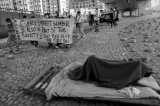
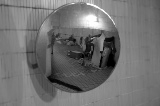
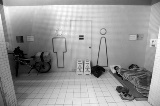
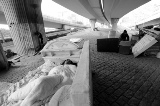
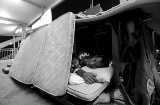

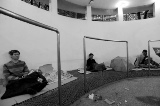
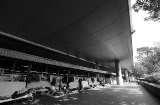
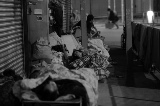
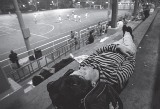
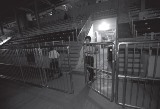









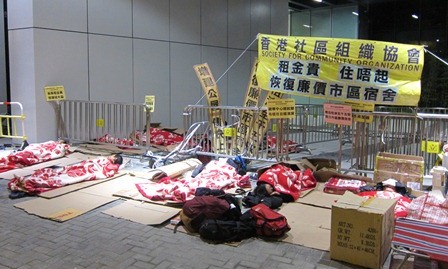
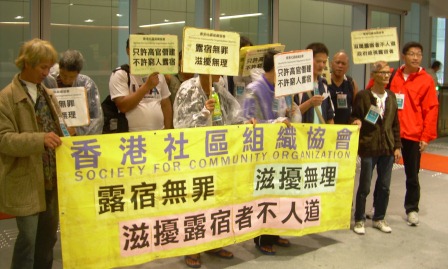
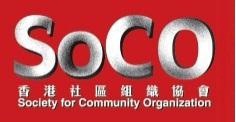 ������ϲ�´��|
Society
for Community Organization (SoCO)
������ϲ�´��|
Society
for Community Organization (SoCO)
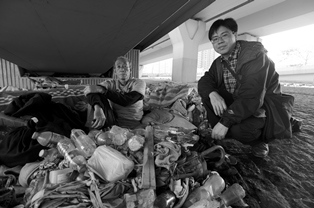
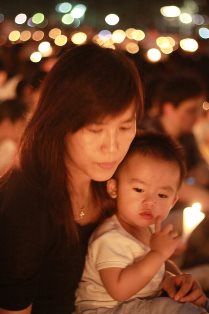
 o a
o a